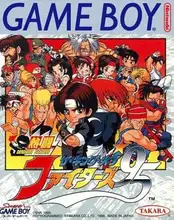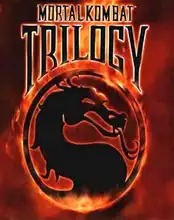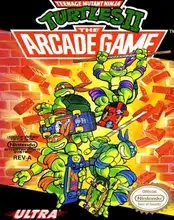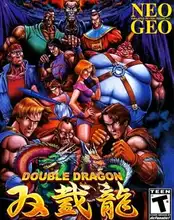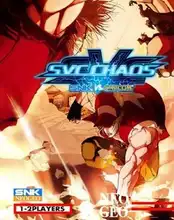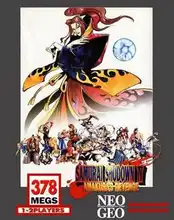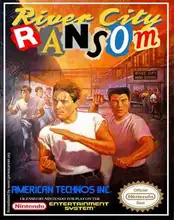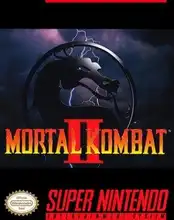Remember pumping quarters into arcade cabinets, mesmerized by sprites delivering lightning-fast kicks and devastating punches? Or maybe you spent hours on your home console, mastering button combinations to unleash a special move? For many retro gamers, Martial Arts Games weren't just a genre; they were an obsession, fueled by the martial arts movie craze and the sheer thrill of digital combat.
From simple side-scrolling brawlers to complex one-on-one duels, these games captured the fantasy of becoming a martial arts master, even if our real-world skills extended only to rapid thumb movements. Let's take a nostalgic trip through the history of pixelated combat.
The Early Days: Simple Brawlers and Arcade Glory
Before intricate combos and character rosters, early Martial Arts Games were often straightforward affairs. Think single-screen challenges or simple side-scrolling progression.
Games like Irem's Kung-Fu Master (or Spartan X in Japan), heavily influenced by Bruce Lee and Jackie Chan films, dropped you into a multi-floor temple filled with generic goons, knife throwers, and distinct bosses. Your moveset was basic – punches, kicks, and jumps – but mastering the timing and enemy patterns was key to rescuing Silvia. It was simple, elegant, and incredibly influential, paving the way for countless beat 'em ups.
Konami's Yie Ar Kung-Fu offered a different flavor: the one-on-one duel. While basic by today's standards, it featured opponents with distinct looks and fighting styles (some loosely based on movie stars), making each fight feel unique. It lacked a second player mode, but it honed the concept of character-based matchups that would define a genre.
These early games, despite technical limitations, captured the spirit of martial arts – the challenge, the progression, and the fantasy of facing down multiple foes with just your fists and feet.
The Revolution: The Rise of the One-on-One Fighter
Then came the earthquake. The late 80s and early 90s saw the birth of the modern fighting game genre, and Martial Arts Games were at its core.
Capcom's Street Fighter II (1991) wasn't the first one-on-one fighter, but it perfected the formula. With a diverse international cast, each boasting unique special moves (Hadoken! Sonic Boom! Spinning Bird Kick!), distinct fighting styles, and backstories, SFII exploded onto the scene. It introduced concepts like complex inputs for special moves, character balance, and the competitive two-player format that became the standard. It felt fast, stylish, and demanded genuine skill beyond just mashing buttons.
Not long after, Midway unleashed Mortal Kombat (1992). While Street Fighter II leaned into varied global styles, Mortal Kombat embraced mysticism, gore, and a darker tone. Its digitized sprites, based on motion-captured actors (including a real kickboxer!), gave it a unique, albeit sometimes stiff, look. But it was the controversial Fatalities – brutal finishing moves – that cemented its place in pop culture history and parental nightmares. Mortal Kombat showed that Martial Arts Games could be fantastical and edgy, not just grounded in traditional styles.
These titles weren't just games; they were cultural phenomena, sparking countless hours of competitive play, playground arguments about who was the best character, and a lasting legacy that continues today.
Beyond the Arcade: Side-Scrollers and RPG Journeys
While the one-on-one fighter dominated the competitive scene, martial arts themes also thrived in other genres during the retro era.
Side-scrolling beat 'em ups like Double Dragon, Final Fight, and the Streets of Rage series let you team up with a friend to clean up mean streets using a variety of punches, kicks, throws, and sometimes even weapons. While less focused on specific martial arts styles, the core gameplay of clearing screens of enemies with hand-to-hand combat kept the spirit alive.
Even platformers got in on the action, with games like Shinobi featuring ninja protagonists using martial arts and fantastical Ninjutsu powers.
Later, as consoles became more powerful, Martial Arts Games began to explore deeper narratives and even RPG mechanics. Sega's Shenmue (1999) wasn't purely a fighting game, but its combat system was based on Virtua Fighter and allowed players to train and master various techniques. BioWare's Jade Empire (2005) was a full-blown action RPG set in a fictionalized ancient China, allowing players to learn and combine numerous martial arts styles, complete with cinematic Chi abilities and philosophical choices. These games showed that martial arts could be the foundation for rich stories and character development, not just fighting tournaments.
Why We Loved Them (And Still Do)
So, why did these Martial Arts Games resonate so deeply?
- Capturing the Craze: The 80s and 90s were saturated with martial arts movies. These games let us step into the shoes of those cinematic heroes.
- Fantasy vs. Reality: They offered a safe space to experience incredible, often unrealistic, combat. Stopping time, throwing fireballs, or performing gravity-defying kicks were all possible. This escapism was a huge draw compared to the discipline and potential bumps and bruises of real-world training.
- Skill Development: While they won't teach you how to throw a proper punch, these games honed reflexes, pattern recognition, timing, and strategic thinking – skills valuable both in and out of the game world.
- Pure Fun: At their core, they were just incredibly fun to play, whether against the computer or, ideally, a friend sitting right next to you on the couch or at the arcade cabinet.
They weren't substitutes for real martial arts, but they were fantastic entertainment, providing accessible, exciting combat that fueled our imaginations.
Finding These Classics Today
Feeling that pang of nostalgia? Many classic Martial Arts Games are still accessible:
- Digital Stores: Platforms like GOG.com often have collections or individual releases of older PC fighting games or RPGs like Jade Empire.
- Emulation: For true arcade or console experiences, emulators like MAME (for arcade) or console-specific ones paired with ROMs (check local laws regarding ownership!) can bring these games back to life. DOS games can often be run using DOSBox.
- Collections/Ports: Many classic fighting games have received modern ports or are included in retro collections on current consoles.
- Archive.org: The Internet Archive has a vast collection of playable-in-browser vintage games, including many classic PC and console titles that fit the bill.
Whether you revisit them through official channels or emulation, the pixelated arenas and digitized dojos of retro Martial Arts Games are waiting for your return.
FAQ
Q: Do retro Martial Arts Games teach you real fighting skills? A: No, not in the slightest! While some games might feature motion-captured moves, the gameplay focuses on timing, reflexes, and button inputs, not actual combat technique or physical conditioning. They are purely for entertainment.
Q: Why did people play these games instead of learning real martial arts? A: Video games offer accessibility, lower cost, no risk of injury, instant gratification, and fantasy elements that aren't possible in reality. They require less time commitment and can be played from the comfort of home.
Q: What are some of the most influential retro Martial Arts Games? A: Kung-Fu Master, Yie Ar Kung-Fu, Street Fighter II, and Mortal Kombat are arguably the most historically significant in defining genres and capturing public attention during the retro era.
Q: Can I play these old games on modern computers? A: Yes! Many have official ports or are available on digital stores. Emulators like DOSBox or MAME are also popular ways to run original game files.

